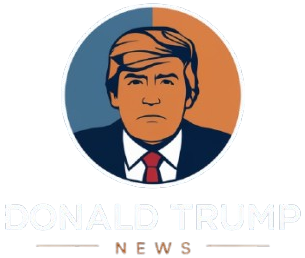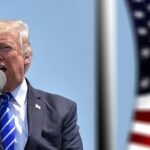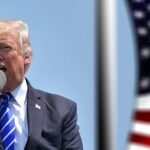The Supreme Court’s Decision on Tariffs: A Turning Point for the U.S. Economy
As the United States continues to deal with the lasting effects of trade policies from the Trump era, attention is focused on an impending Supreme Court ruling that could redefine the legality of tariffs imposed during his administration. If these tariffs are deemed unconstitutional, it could lead to significant changes across various economic sectors, impacting international trade and domestic production. The potential consequences range from shifts in consumer pricing to challenges faced by American companies that depend on imported materials, all of which could influence economic recovery in a post-pandemic world. This article delves into the possible ramifications of such a judicial ruling and its effects on consumers, industries, and U.S. trade relations within an increasingly interconnected global marketplace.
Impact of Tariff Removal on American Economy
The possible elimination of tariffs established during Trump’s presidency may have profound implications for both American businesses and consumers alike. Since tariffs generally elevate import costs, their removal could result in lower operational expenses for firms reliant on foreign goods. This transition might yield several beneficial outcomes:
- Reduced consumer prices: With decreased import expenses, companies may be able to lower prices for consumers, making products more accessible.
- Enhanced competitiveness: By cutting production costs, U.S.-based firms might gain a stronger foothold in global markets.
- Improved supply chain adaptability: Businesses can explore diverse sourcing options without facing additional tariff burdens, leading to a more agile supply chain.
However, rapidly moving away from tariffs may also introduce certain challenges. Industries that have benefited from tariff protections might find it difficult to compete effectively against foreign rivals—potentially resulting in job losses within those sectors. Furthermore, swift changes could trigger market volatility, particularly affecting industries like steel and agriculture that previously thrived under higher tariff rates. The table below outlines potential impacts across various sectors:
| Sectors Affected | Potential Outcomes Following Tariff Removal |
|---|---|
| Manufacturing Sector | Lowers costs; boosts competitiveness globally. |
| Lowers prices for end-users; |
Legal Framework and Constitutional Issues Surrounding Trade Policy
The legal framework governing trade policy in America is complex and influenced by historical precedents alongside evolving constitutional interpretations. Should the Supreme Court invalidate Trump’s tariffs, this decision would likely spark discussions about executive power versus congressional authority regarding trade regulations—drawing comparisons between cases likeUnited States v. Curtiss-Wright Export Corp., which affirmed presidential powers over foreign affairs againstNational Federation of Independent Business v. Sebelius strong>, which underscored limits on governmental reach.
This ruling has broader implications as well; it may prompt scrutiny over how tariff powers are exercised without explicit congressional approval under the Commerce Clause—a key element defining regulatory authority over commerce among states and nations alike.
A decision against these tariffs might lead to greater emphasis being placed back onto Congress regarding future tariff implementations with stakeholders needing to adapt accordingly through:
- < strong > Heightened examination of executive actions; li >
- < strong > Stricter oversight by legislative bodies; li >
- < strong > Legal disputes initiated by impacted industries; li > ul > p >
Strategic Guidelines for Leaders and Policymakers After Tariff Revisions
If there are significant alterations made concerning Trump-era tariffs ,it becomes essential for both policymakers as well as industry leaders adopt proactive strategies .
For policymakers ,the focus should shift towards developing adaptable trading frameworks capable enough handle changing dynamics present within today’s global economy .This includes nurturing robust bilateral/multilateral partnerships while ensuring equitable agreements benefit all parties involved along with addressing stakeholder concerns so public support remains intact.
Additionally establishing comprehensive systems designed monitor assess impacts arising due revised tariff structures will help alleviate negative repercussions felt throughout economy .< / p >On behalf industry executives ,priorities must center around flexibility innovation .Companies ought reevaluate existing supply chains operational methodologies optimize efficiency amidst shifting landscapes brought forth through potential removal said duties .Investments directed towards technology automation can bolster productivity reduce expenditures thereby enhancing competitive positioning overall market landscape further still diversifying product offerings markets reduces reliance singular economies altogether.< br />The following actionable steps can facilitate this strategic transition : p >
- < strong > Explore alternative sourcing avenues mitigate risks tied disruptions occurring within supply chains ;< / li >
- < strong > Foster collaboration amongst relevant associations advocate fair practices support affected sectors ;< / li >
- < strong > Encourage domestic innovation via research development initiatives maintain competitive edge ;< / li > ul >
Final Thoughts h 2 >
The anticipated nullification or upholding former President Trump’s imposed duties by Supreme Court holds promise ushering transformative shifts across United States’ economic terrain.< br />Such verdict not only influences international relations government revenue streams but also reconfigures dynamics surrounding global supply chains consumer pricing structures alike.As justices deliberate intricate legal matters entwined executive authority pertaining trading policies stakeholders spanning manufacturers farmers everyday shoppers navigate uncertainties looming post-tariff landscape ahead.The outcome will resonate beyond mere economics shaping political dialogues redefining governmental roles regulating marketplaces moving forward.As we await their judgment broader consequences stemming pivotal moment legislation remain poised reshape America’s financial trajectory long term.









